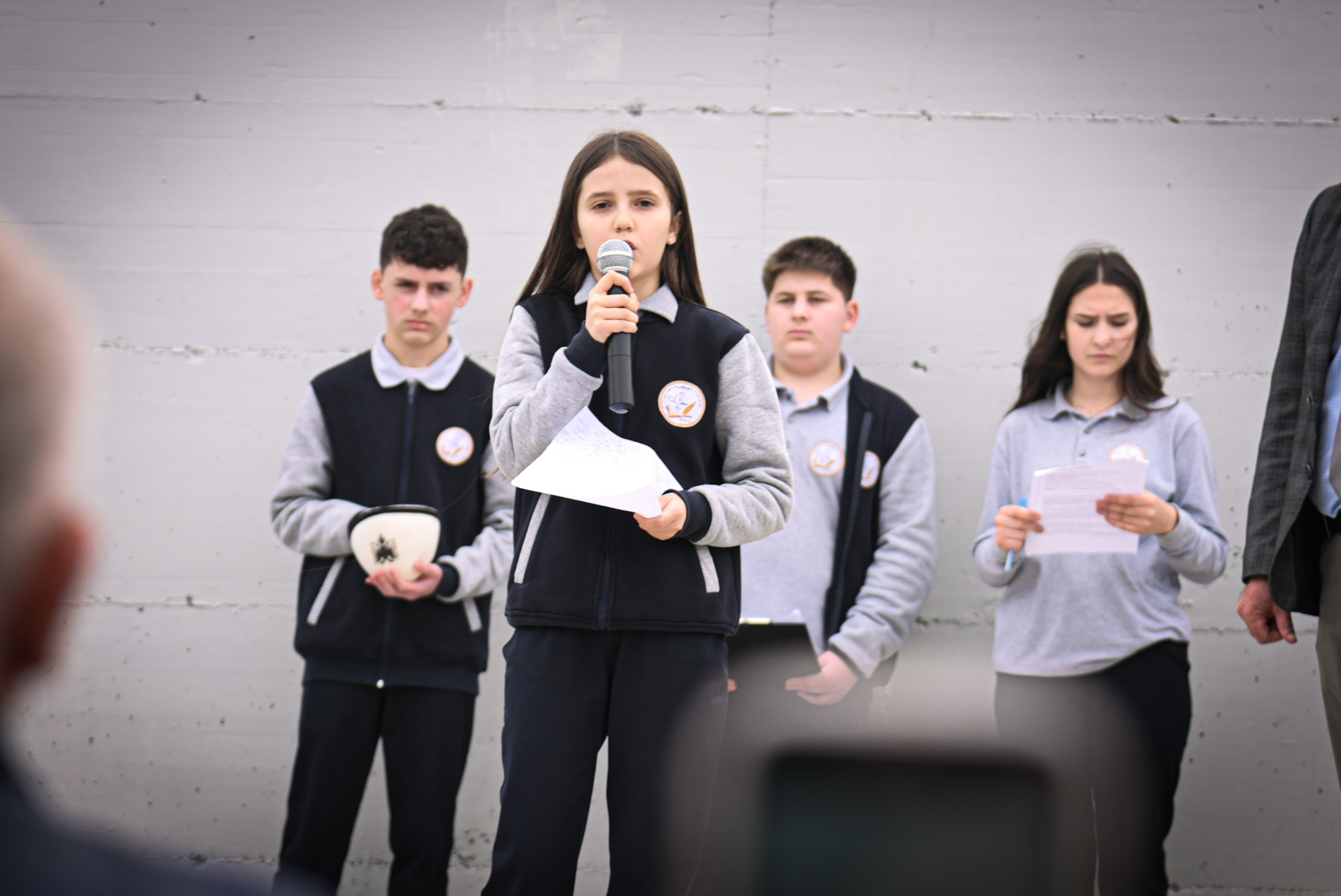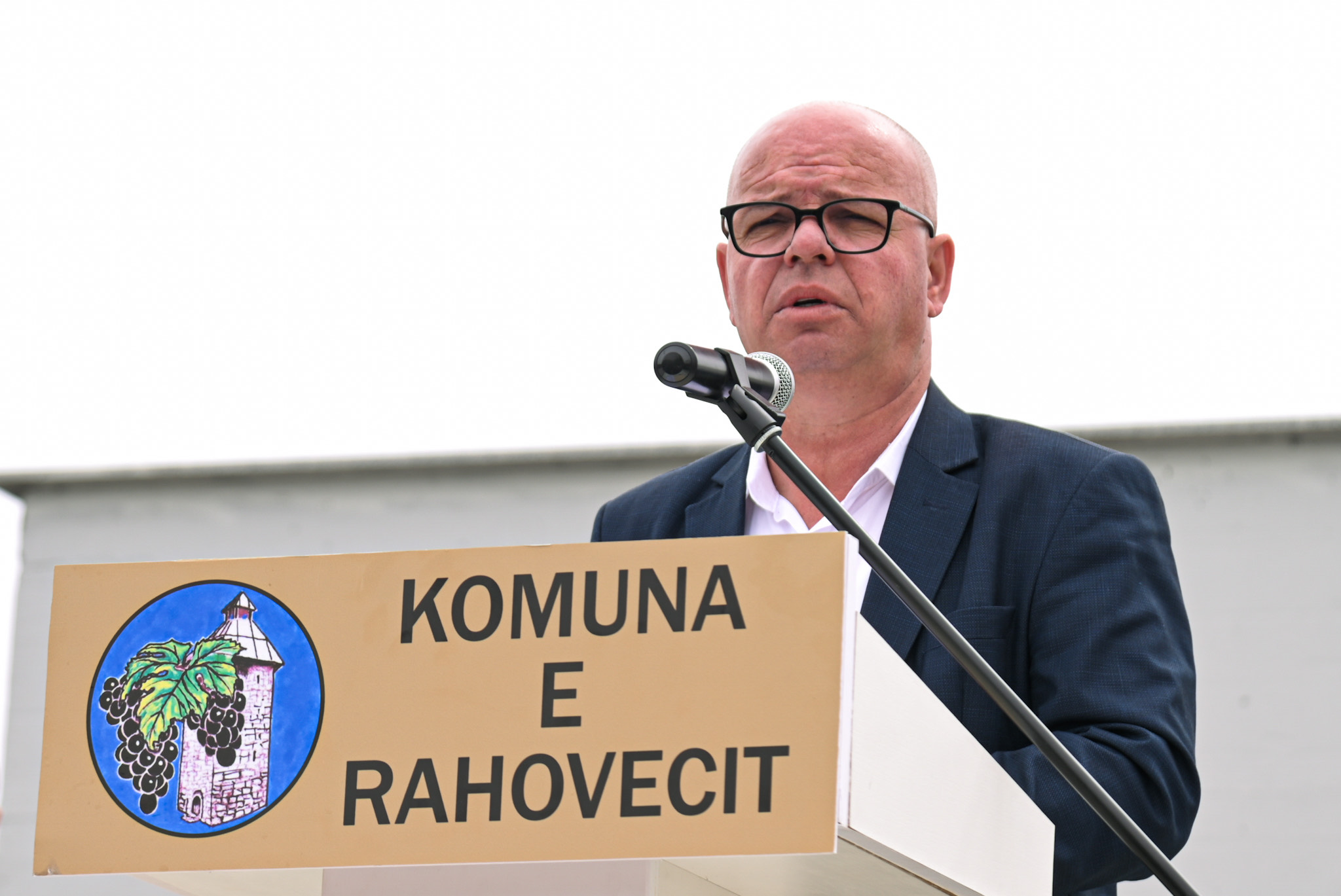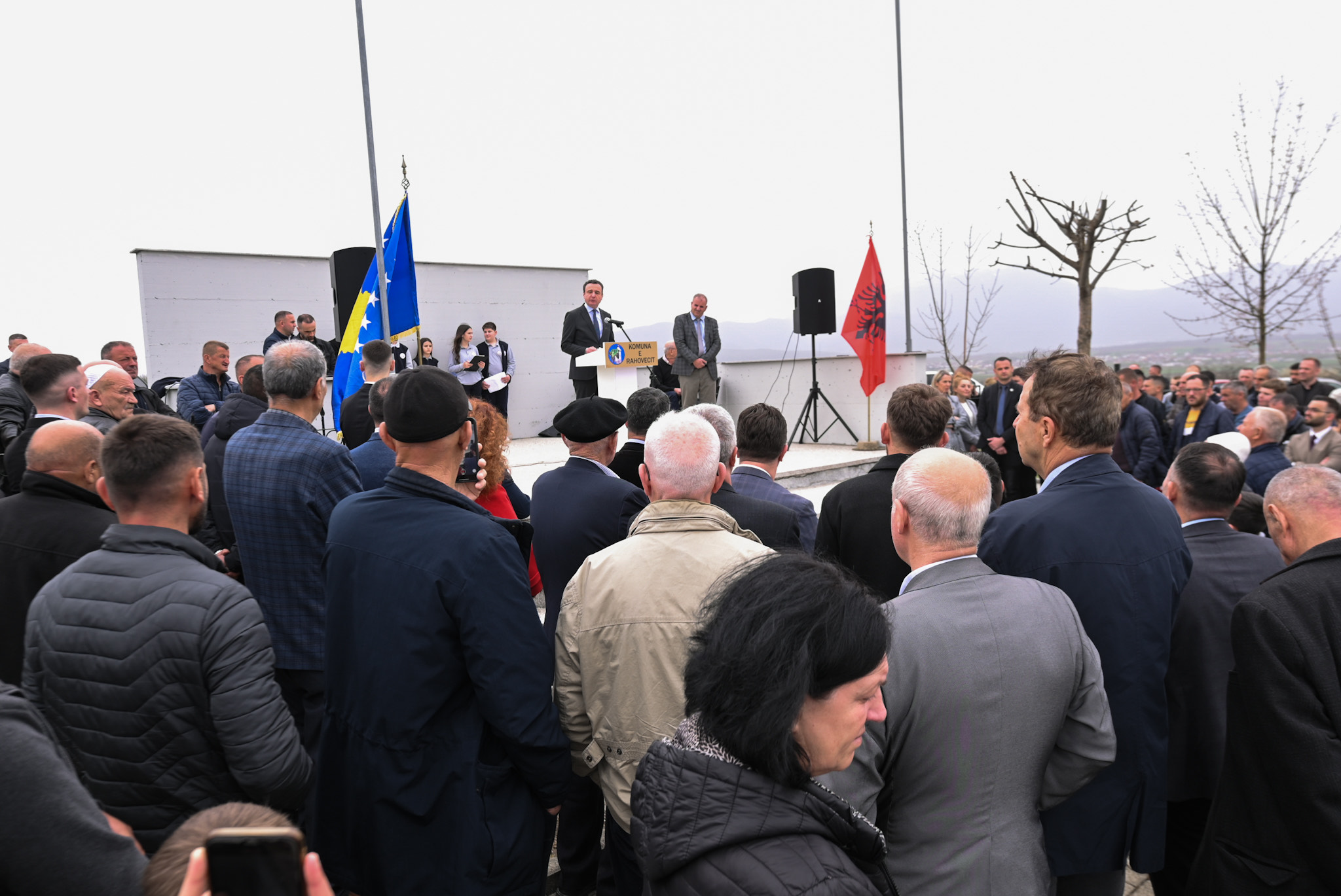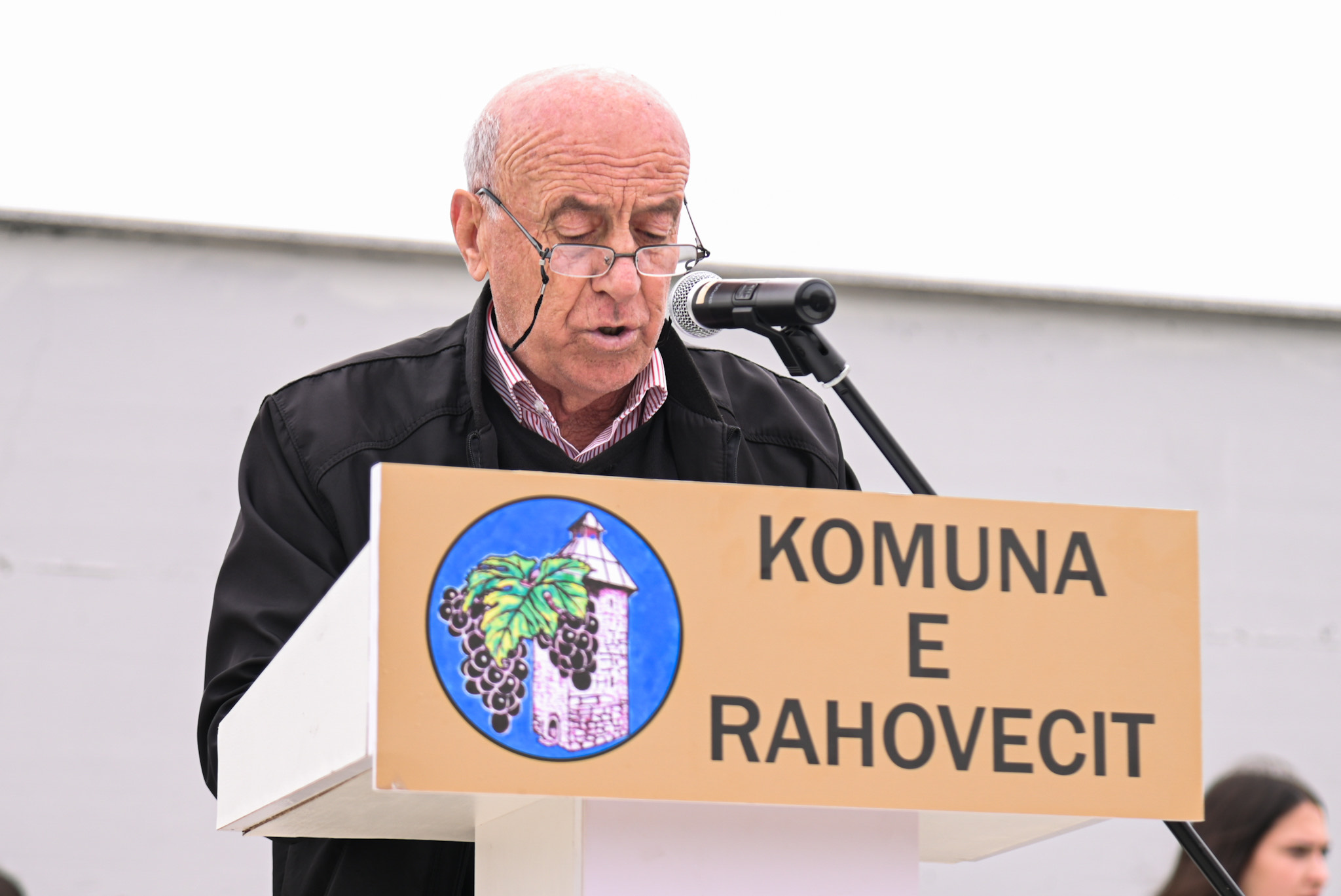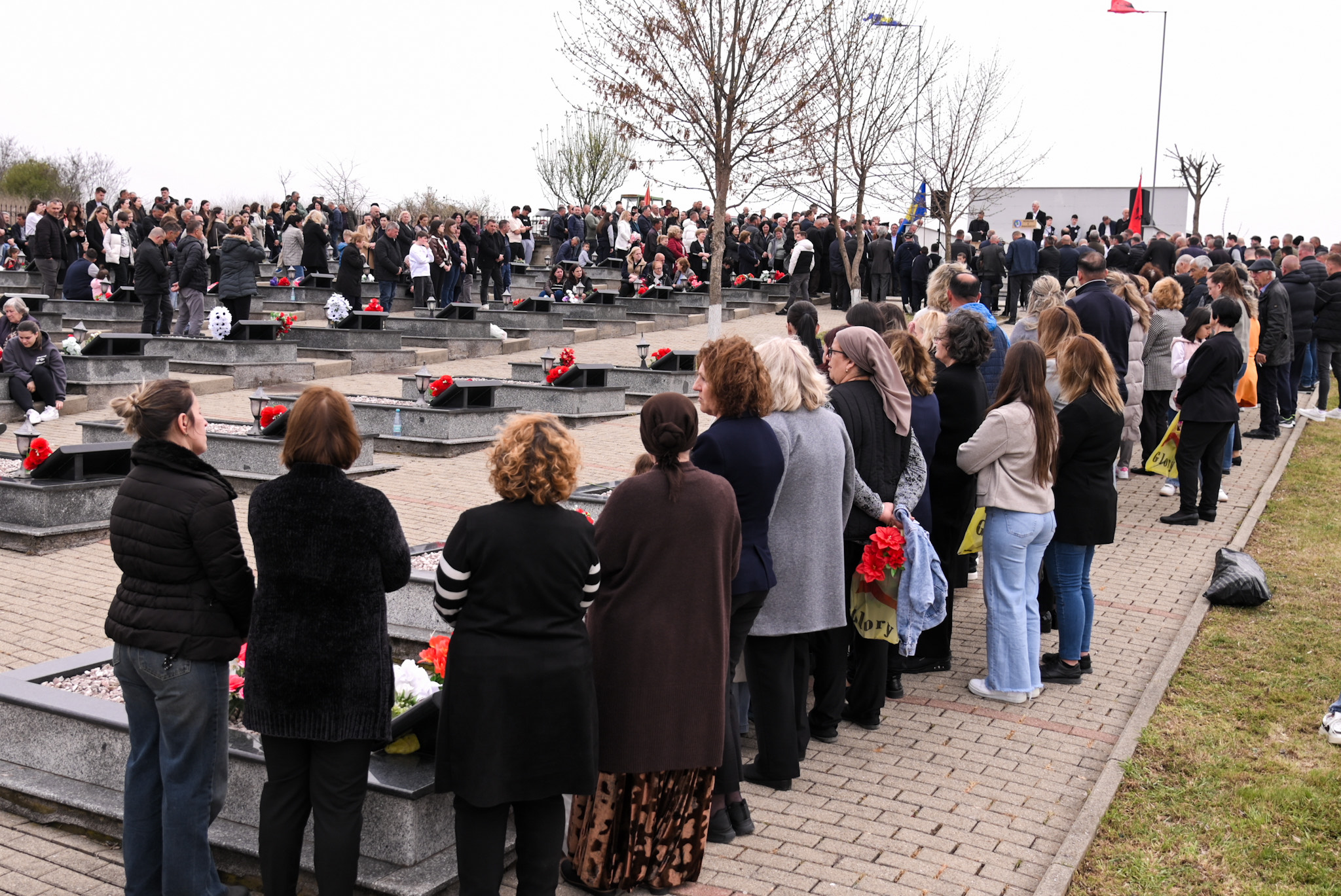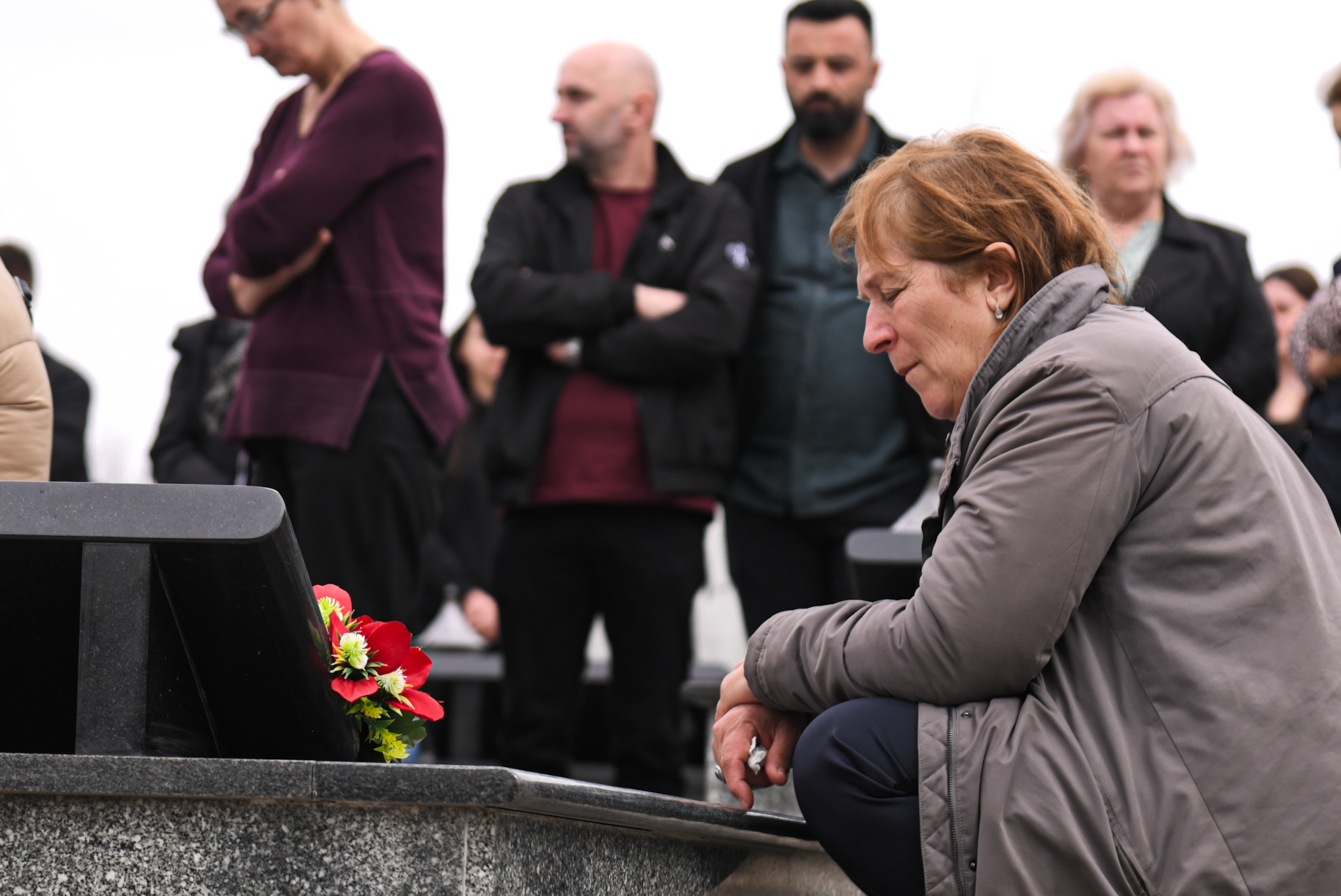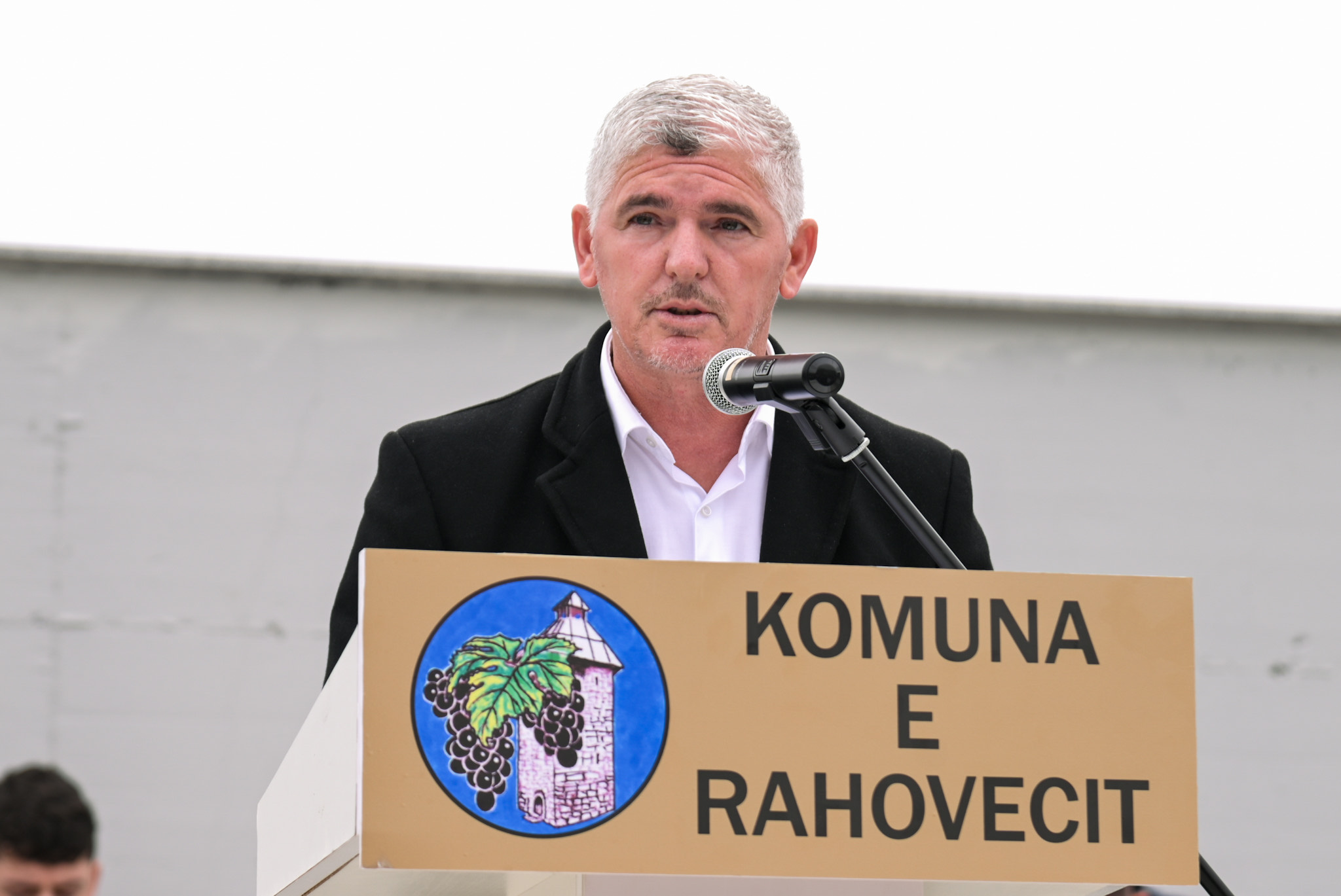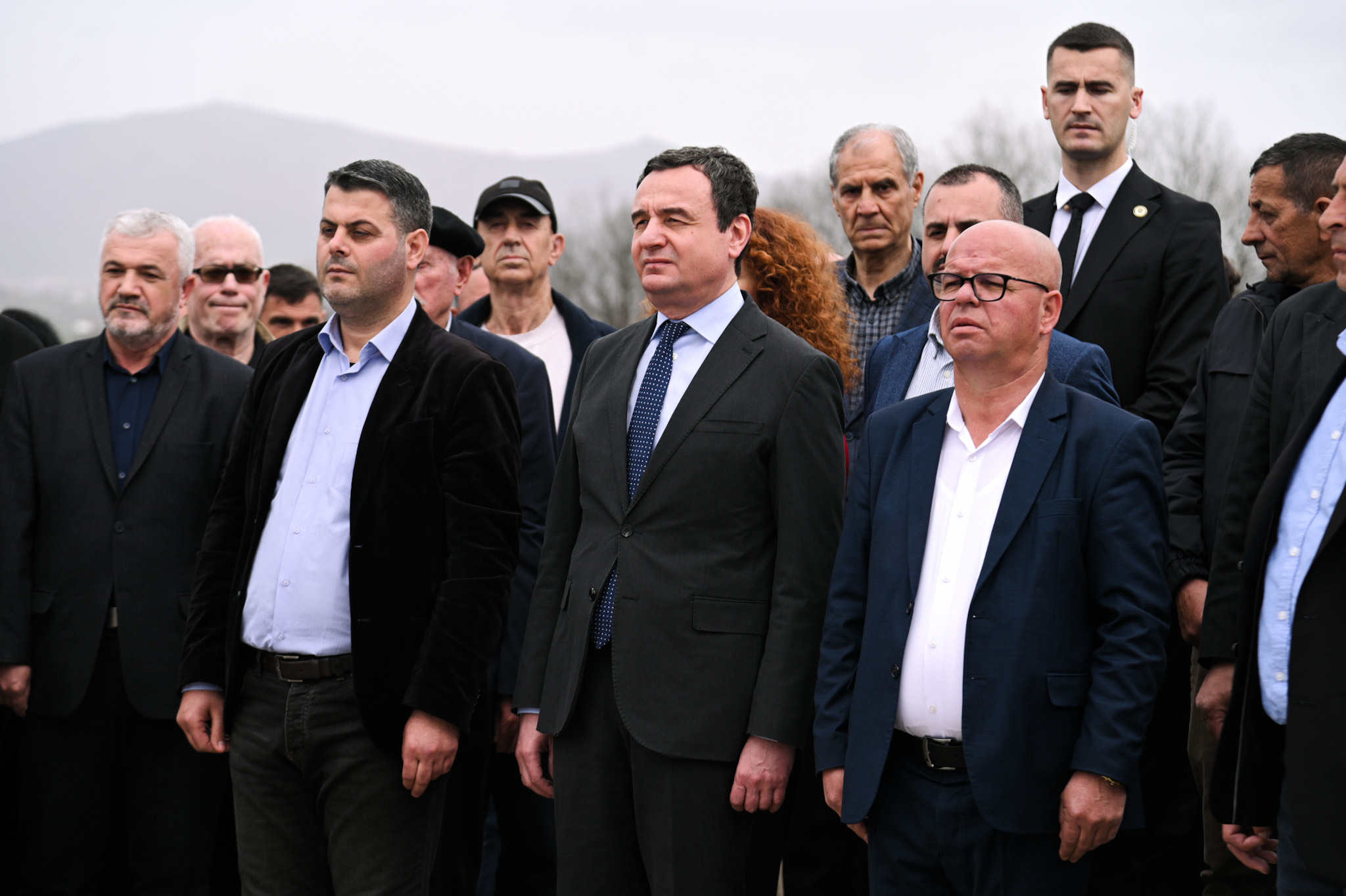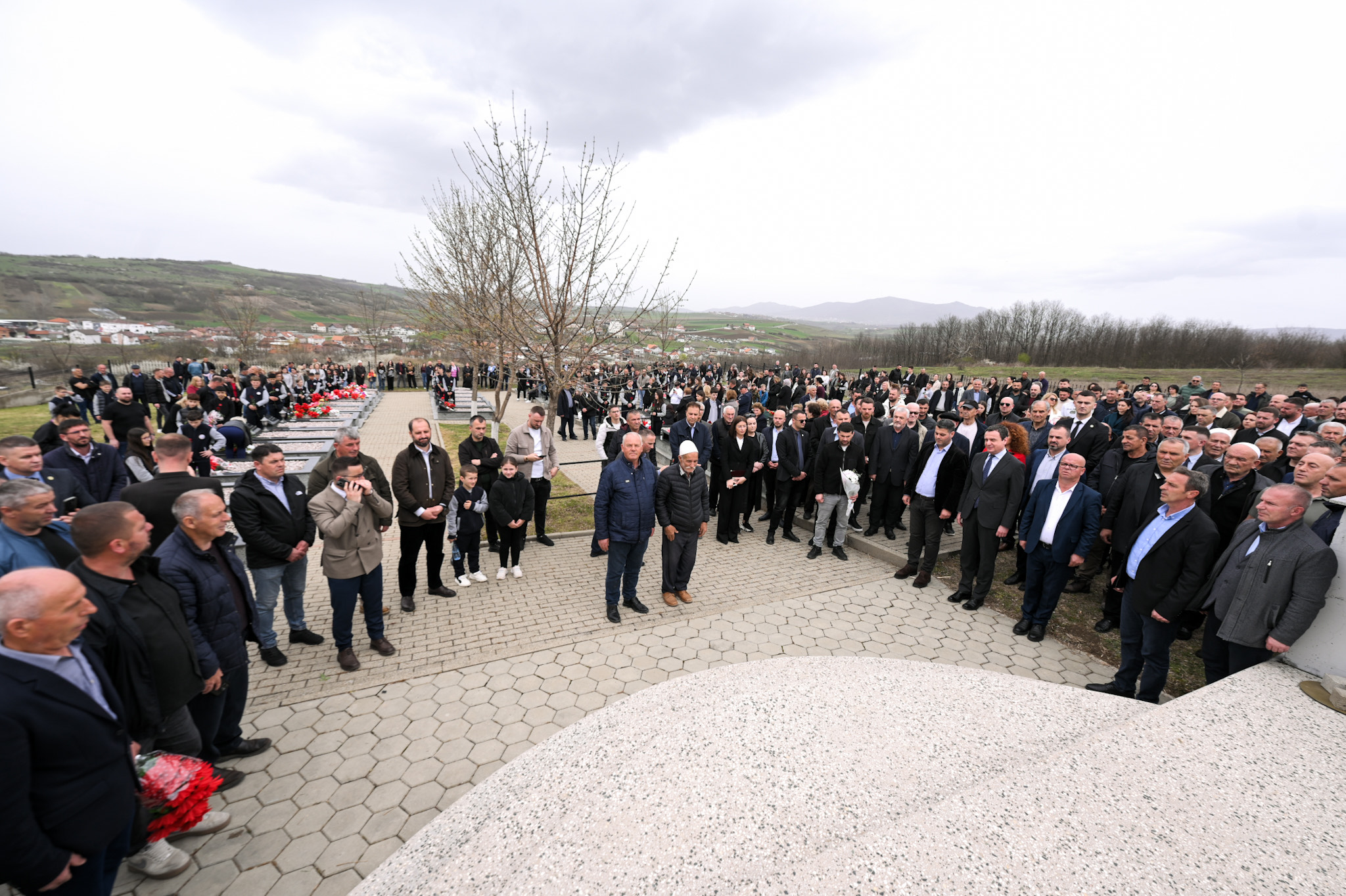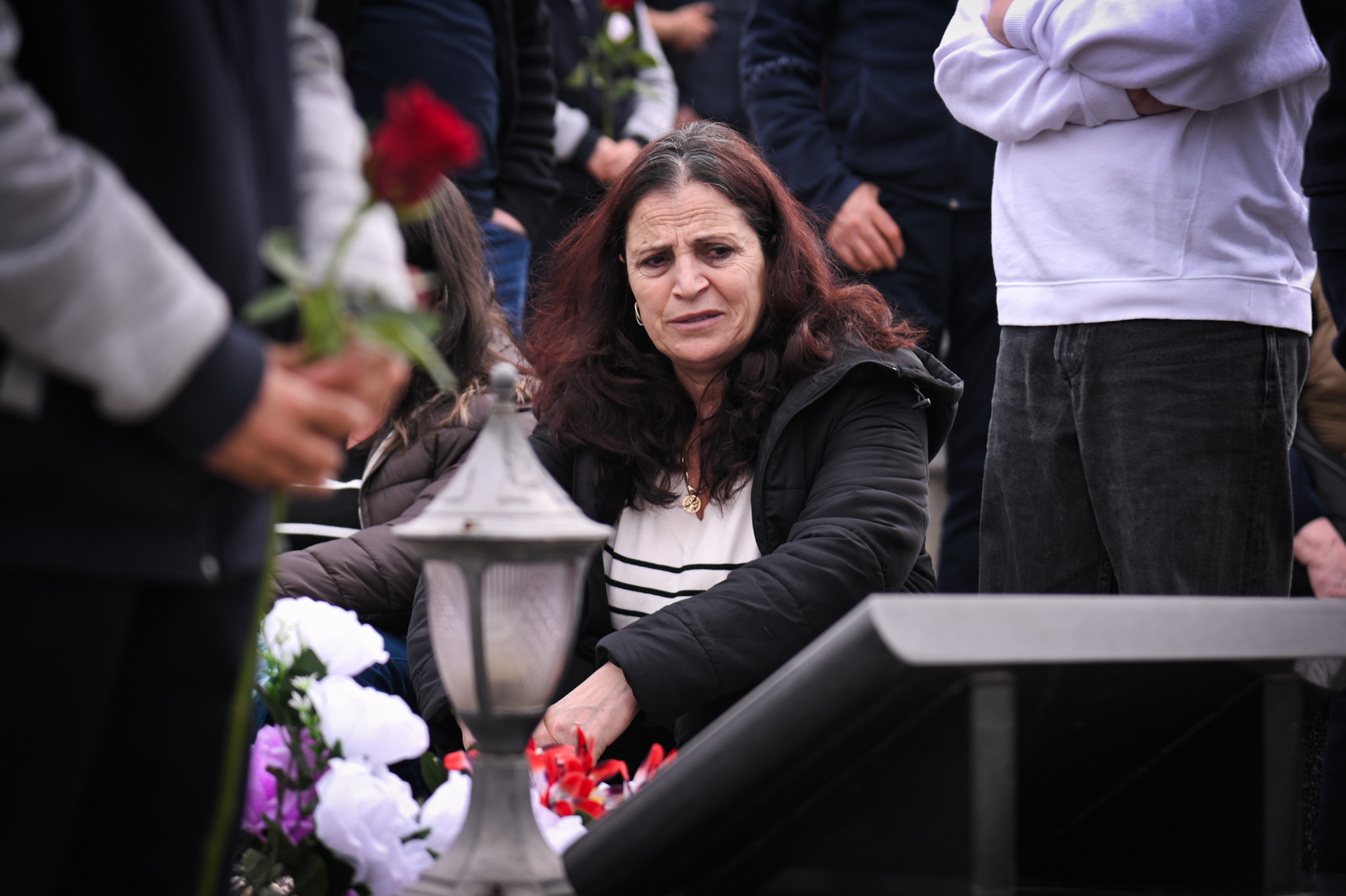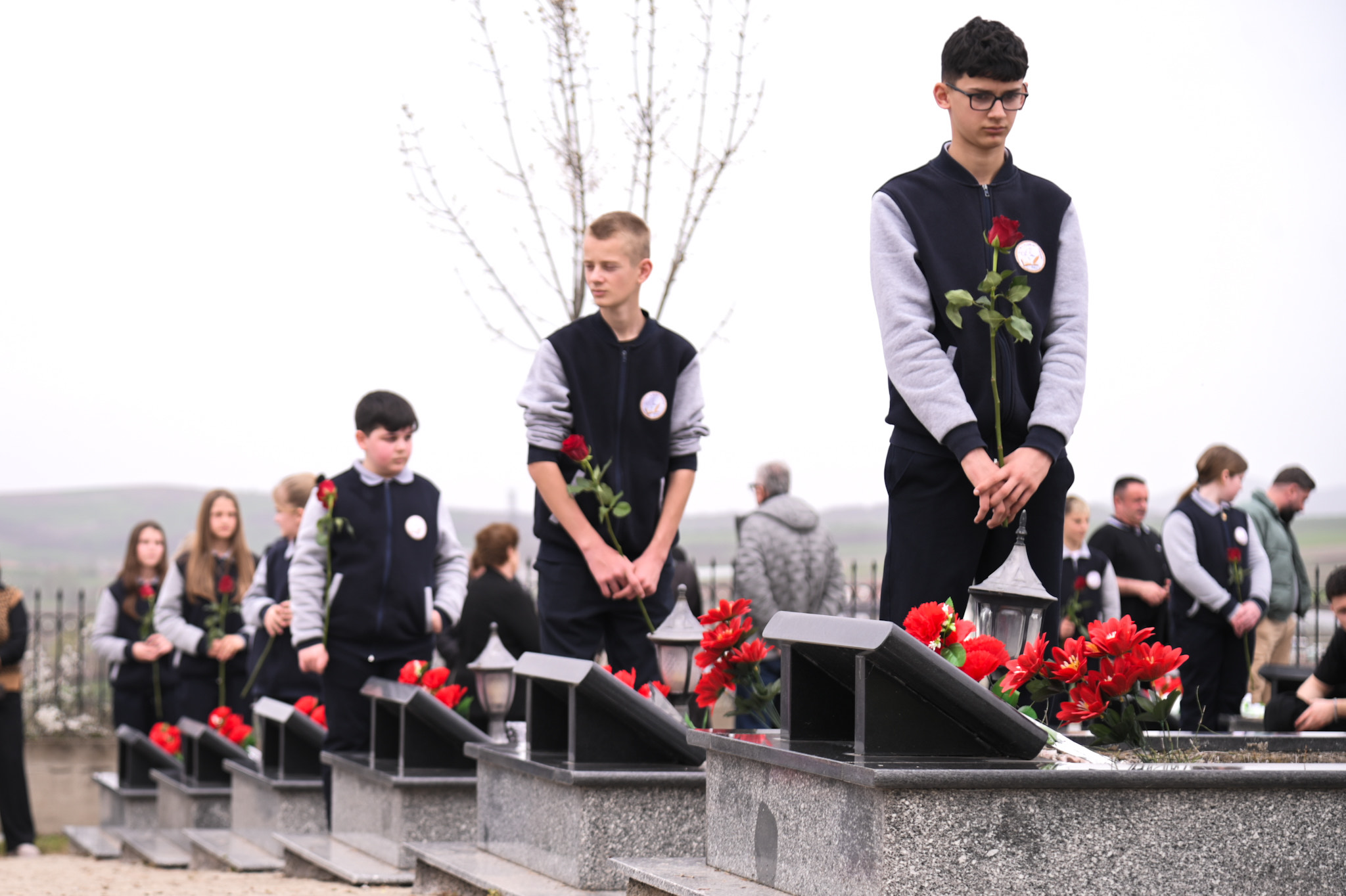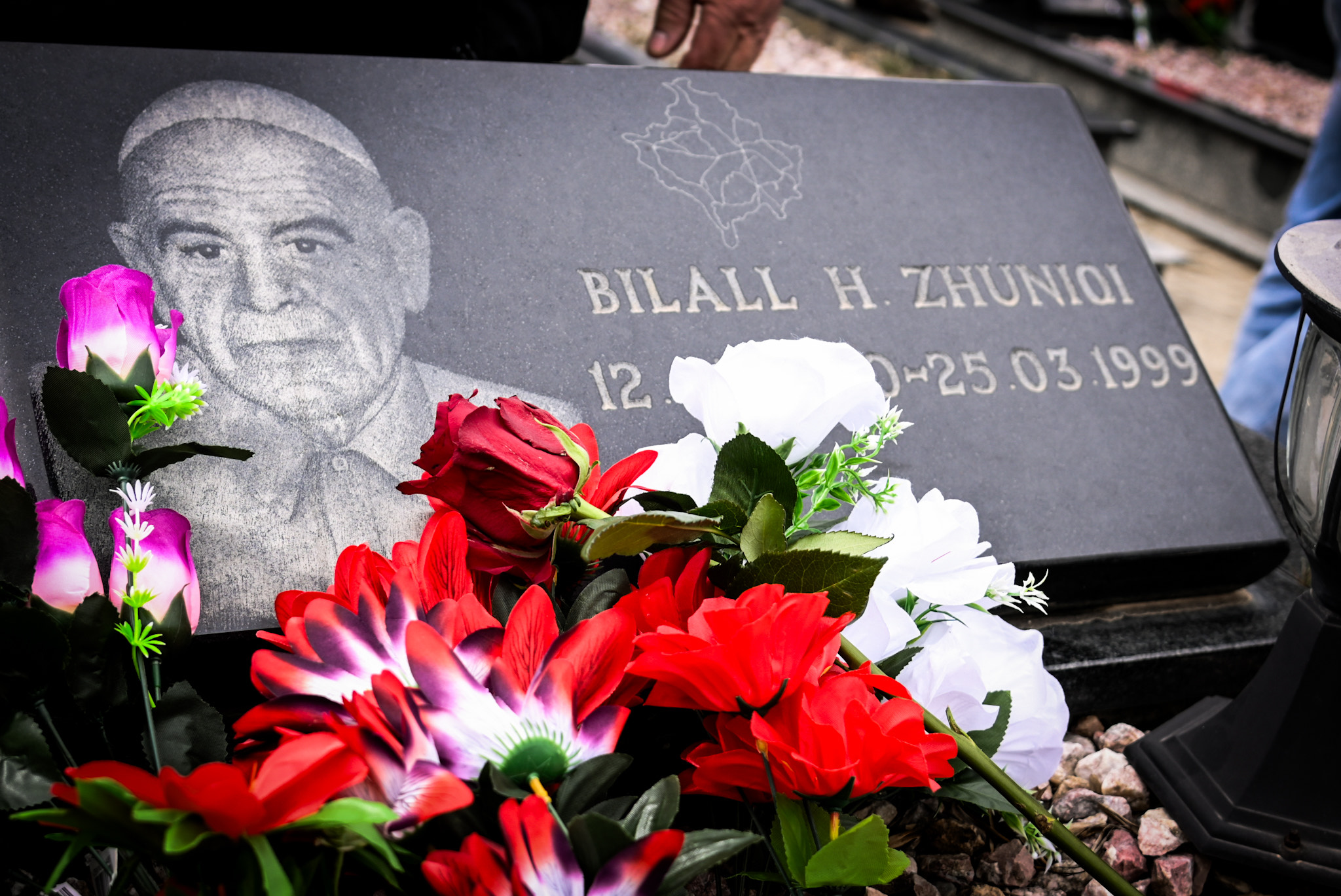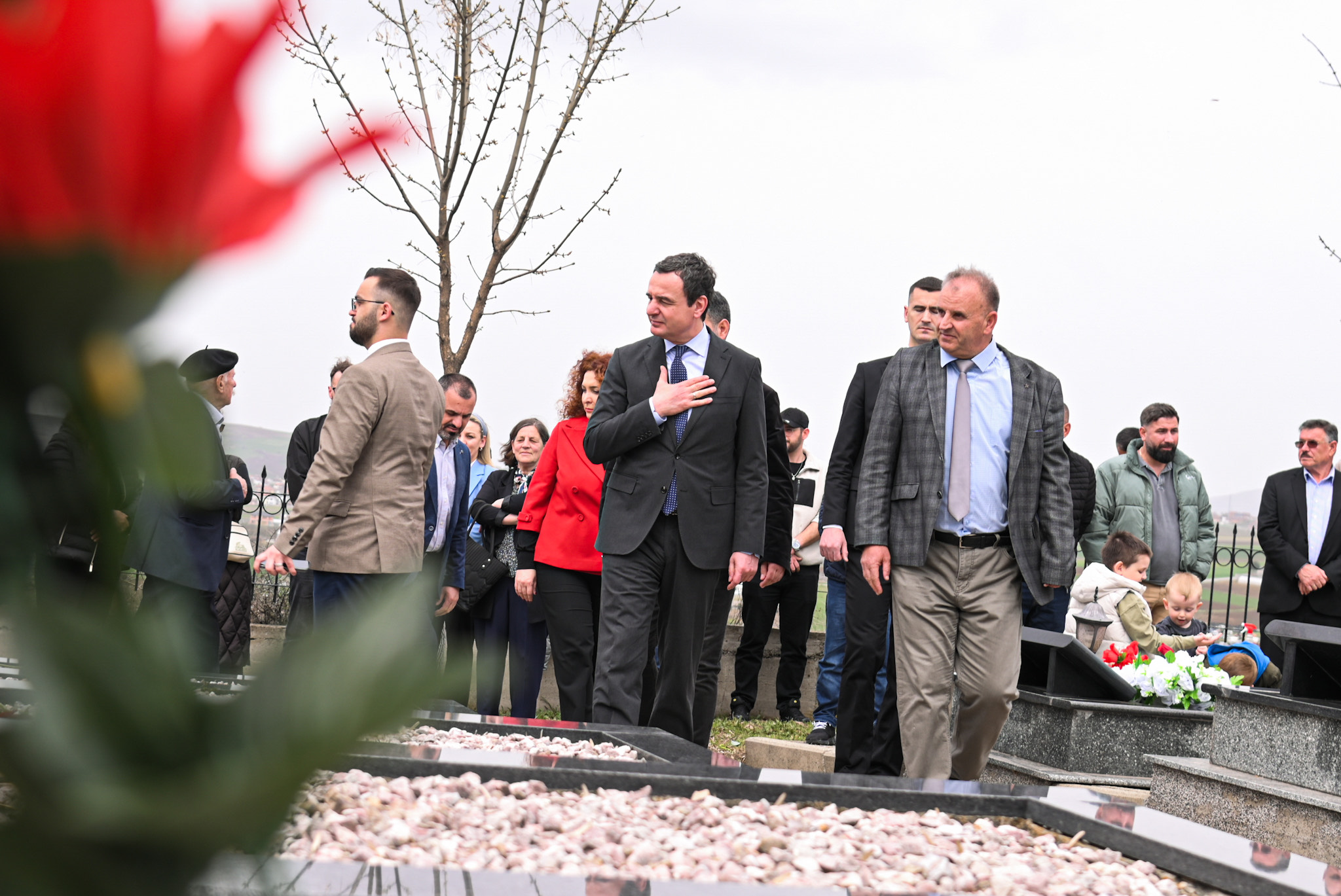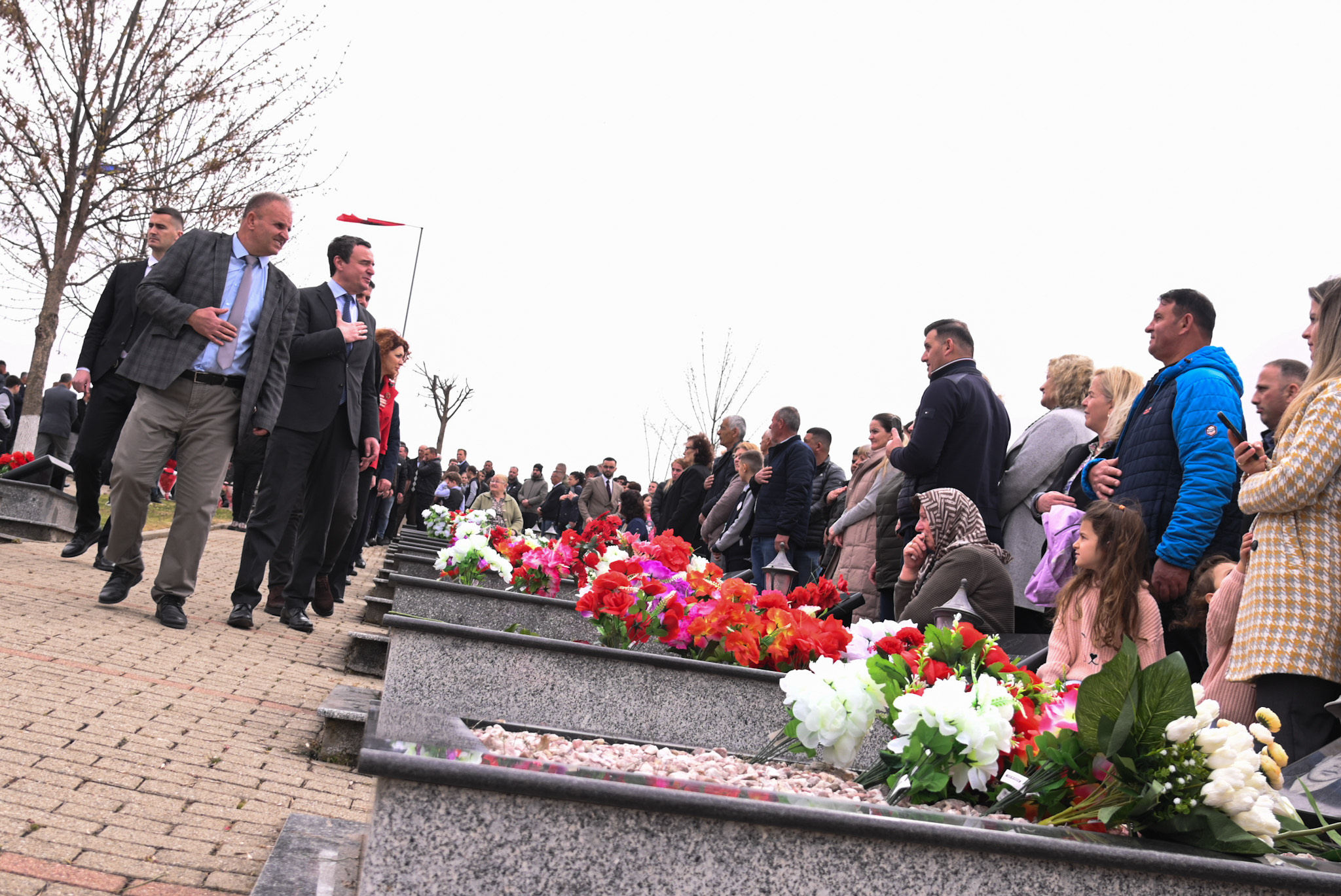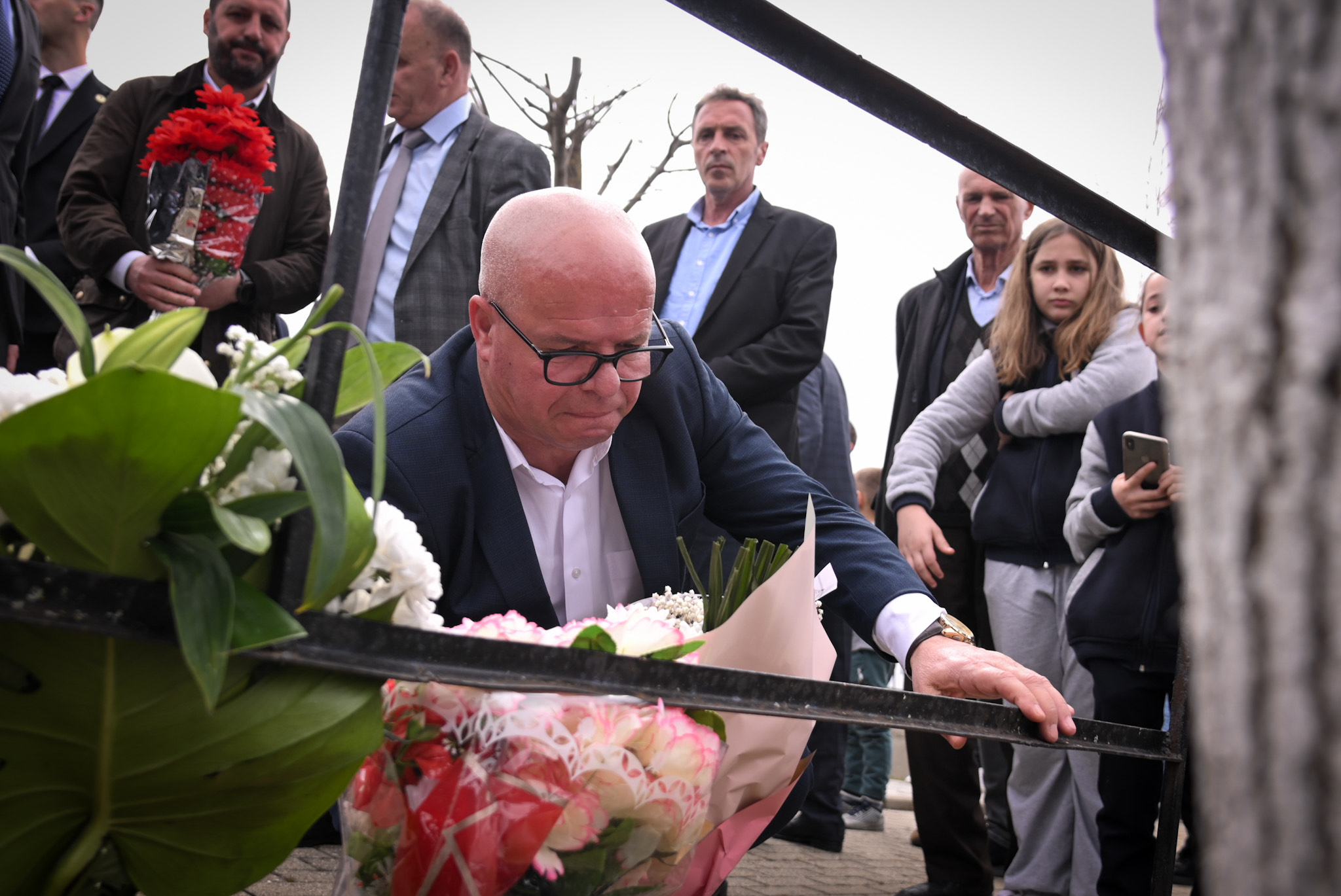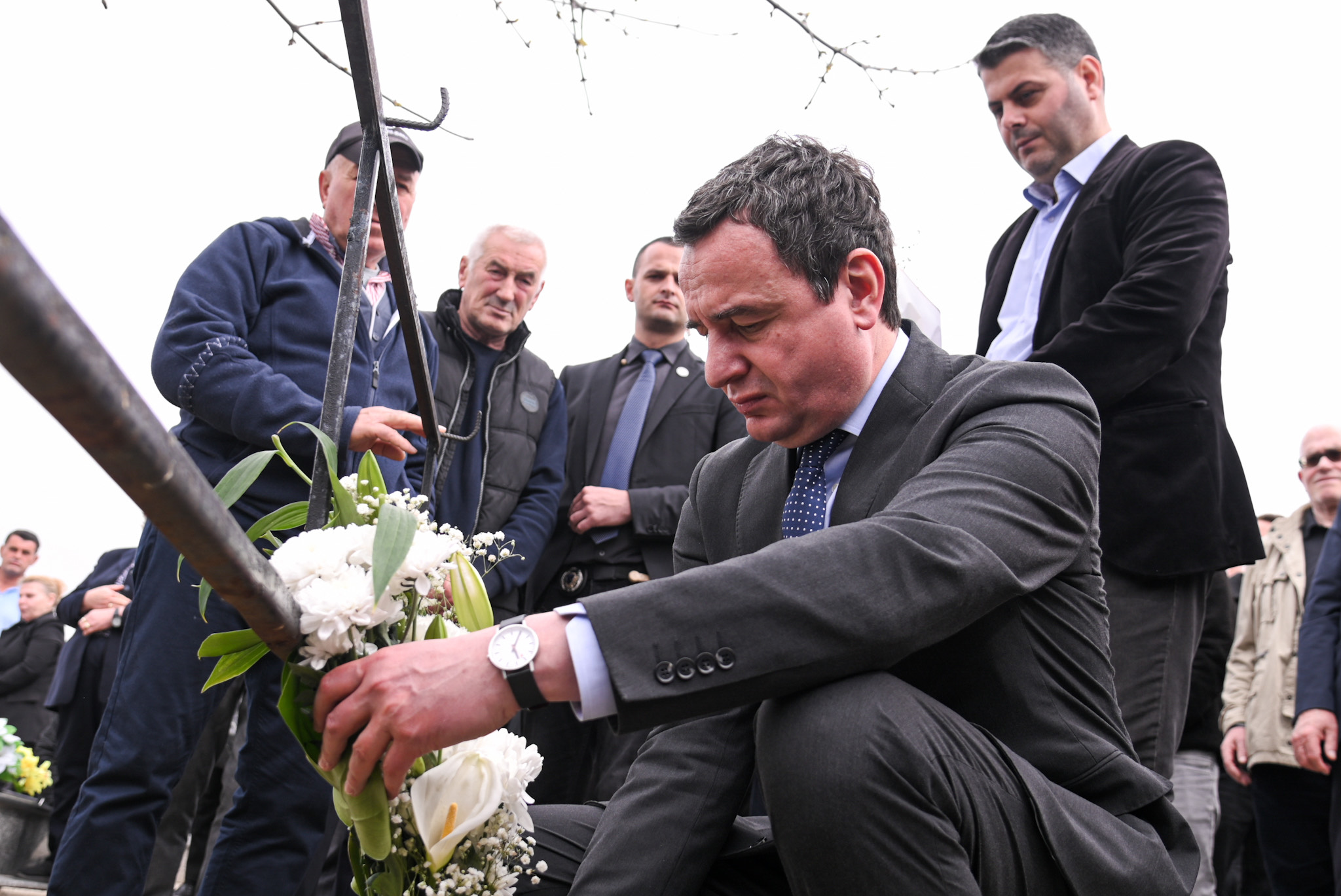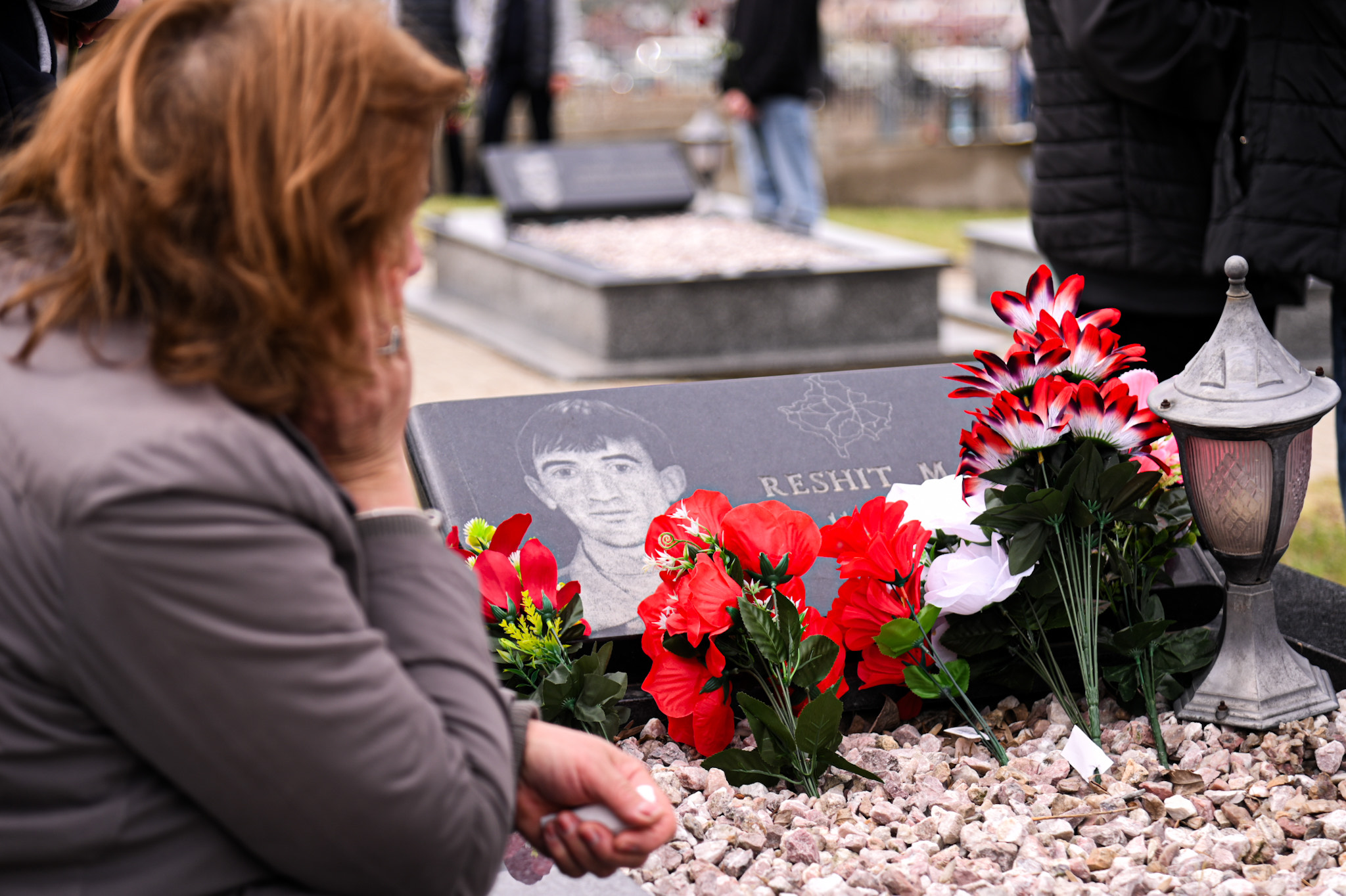Fortesë, Rahovec, March 25, 2025
After paying homage and laying wreaths of fresh flowers at the cemeteries of martyrs and the fallen in Brestoc, Rahovec, the Prime Minister of the Republic of Kosovo, Albin Kurti, continued with homage in the village of Fortesë of this municipality, where he participated in the memorial gathering for those killed in the cruel massacre in this place by members of the Serbian armed forces.
In commemoration of the martyrs and the fallen murdered in this massacre, the Prime Minister said that he is there today to commemorate the sacrifice and resistance of our people for freedom, for the lives lost and for the survival of the people, in the face of the Serbian genocide.
At this memorial gathering, Prime Minister Kurti reminded those present of some of the international reports on the terrible genocide that was taking place in Kosovo at the time. Starting with the British newspaper “The Independent”, which had reported that “If there is any doubt that the extermination of the Albanian population of Kosovo was not well planned before the start of the NATO air campaign, the story of Bela Crkva refutes this lie; because the Serb reaction to the first bomb was immediate, coordinated and completely meticulous, without any sign of improvisation”. The British Foreign Secretary, Robin Cook, had also spoken about the Fortesa massacre, saying that “these children could not have posed any danger to anyone, but the Serbian forces clearly saw every Albanian, regardless of age, as an enemy”, while the British investigator, Boytal-Gil, had stated that “of course I have dealt with murder before, but I have never seen anything like this in my life”.
Serbian police had told the group of 13 Albanians in Fortesë to “Ask for help from NATO now!” before shooting them with automatic weapons. “Çlirim, Lumturia, Dhurata, Dardana and Dardan from the Zhuniqi family, as well as Xhemajl, Qamile, Fiqirija, Ilirijana, Marigona, Labinot and Lirim from the Spahiu family, were killed. Only the 3-year-old boy from the Zhuniqi family survived the execution. Among the large number of people sheltering on the riverbank, they also killed doctor Nesim Popaj. That day, among those killed, 15 were children, the youngest being 4 years old,” the Prime Minister said.
The Prime Minister stressed that the Fortesa Massacre was included in the indictment against Slobodan Milošević at the United Nations War Crimes Tribunal in The Hague. Although he was not convicted, the order-givers Nikola Šainović, Nebojša Pavković, Sreten Lukić and Vlastimir Đorđević, among others, were convicted for this massacre.
Standing among many family members, villagers, veterans and invalids of the KLA, the Prime Minister said that we bow to the memory of the men and women, boys and girls, who fell through martyrdom and sacrifice for the liberation of Kosovo.
“May the memory of all those who fell in Fortesë be eternal!”, the Prime Minister said at the end of his speech.
Full speech of Prime Minister Kurti:
Dear residents of Fortesë, Rahovec,
Honorable invalids and veterans of the Kosovo Liberation Army,
Honorable Mayor of the Municipality of Rahovec, Smajl Latifi,
Honorable Chairman of the Alliance for the Future of Kosovo, Ramush Haradinaj,
Honorable Director of the Institute for Crimes Committed During the War in Kosovo, Atdhe Hetemi,
Honorable Member of the Assembly of the Republic, Albena Reshitaj
Honorable Deputy Minister, Mevledin Sinani,
Honorable representatives and leaders of institutions, directors of the municipality, assembly members in Rahovec,
Dear families of the fallen, of the martyrs of the nation,
Sisters and brothers,
Today, we are here in Fortesë to commemorate the sacrifice and resistance of our people for freedom. We are here for the lives lost and for the survival of the people, in the face of the genocide of Serbia.
“If there is any doubt that the extermination of the Albanian population of Kosovo was not well planned before the start of the NATO air campaign, the story of Bela Crkva refutes this lie; for the Serb reaction to the first bomb was immediate, coordinated and completely meticulous, without any sign of improvisation,” wrote the British newspaper “Independent” in 1999.
On March 24, 1999, NATO’s bombing campaign began, with the aim of stopping Serbia’s genocide of Albanians in Kosovo. What followed was a widespread and systematic campaign by Serbian forces to kill and forcibly expel Kosovo Albanians.
I quote once again the British newspaper “The Independent”: “At 3 am, a few hours after NATO fired the first missile into Yugoslav territory, the army began bombing and burning villages along the border with Albania. Bela Crkva was one of the villages that the Serbs had planned the first phase of ethnic cleansing, to create a sanitary cordon between Kosovo and Albania”.
By the start of the NATO operation, five Serbian tanks had reached the village and had taken up positions on the hill. At 4 am, they opened fire from trenches, on the roofs of houses, forcing the civilian population to leave the village.
Still in the dark, the villagers fled towards the banks of the river. Most hid under the bridge that crossed the river, and others further along the bank. Members of the Serbian armed forces found them there at dawn, isolated and unarmed.
“Ask for help from NATO now!”, Serbian police had told the group of 13 Albanians here in Fortesë, before shooting them with automatic weapons. Çlirim, Lumturie, Dhurata, Dardana and Dardan from the Zhuniqi family, as well as Xhemajl, Qamile, Fiqirije, Ilirijana, Marigona, Labinot and Lirim from the Spahiu family, were killed. Only the 3-year-old boy from the Zhuniqi family survived the execution. Among the many who took refuge on the riverbank, among others, they killed doctor Nesim Popaj. That day, among the dead, 15 were children, the youngest being 4 years old.
“These children could not have posed any danger to anyone, but the Serbian forces clearly saw every Albanian, regardless of age, as an enemy.” This is how the British Foreign Secretary, Robin Cook, declared about this massacre.
And then, another interesting quote was given by the British investigator, Boytal-Gil: “Of course I have dealt with murder before, but I have never seen anything like this in my life”.
Fortesa massacre was also included in the indictment against Slobodan Milošević at the United Nations War Crimes Tribunal in The Hague. Although he was not convicted, the order-givers Nikola Šainović, Nebojša Pavković, Sreten Lukić and Vlastimir Đorđević, among others, were convicted for this massacre. However, the perpetrators of this massacre have not yet been convicted or tried.
As KFOR troops were preparing to take control of the area after the ceasefire, Serbian commanders in the city began burning piles of documents hidden in the archives of the police station in Rahovec. Among the surviving documents are those describing the so-called “Trap Plan”, an operation that appears to have been planned as early as January 1999, targeting the village of Bela Crkva, from which the KLA was getting its food. Documents reviewed by a BBC team show that the plan explains how the targeted victims would be gathered outside the village, near the railway bridge, and eliminated on the banks of a small river. The plan also included the division of Serbian forces into different units, which, according to the documents, were under the command of a certain Dusan Vujicic.
The Serbian plan to destroy evidence of the plan to exterminate Albanians, failed.
The many graves here are a great testimony to the Serbian genocide. But you, dear citizens of the Republic, are the testimony of the resistance of our people and the victory of an independent state. Today, this date is a reminder of how precious the freedom we enjoy is.
Honorable sisters and brothers,
As responsible institutions of the Republic and as conscious citizens of the Republic, we come together so that the current generation of children and future generations of children who have not yet been born do not go through the suffering, pain and loss that our generation went through. We come together so that they have a bright future, with a Kosovo, with a region, with a Europe that is free, united and protected by NATO, from any aggression. The Kosovo Army has never been stronger, and the borders of Kosovo have never been protected as they are today.
But, on a day like this, first and foremost and above all, we remember the blood of the martyrs and the fallen that is in the foundations of our state.
We bow to the memory of the men and women, boys and girls, who fell through martyrdom and sacrifice for the liberation of Kosovo.
May the memory of all those who fell in Fortesa be eternal!
Glory!
Last modified: March 27, 2025
